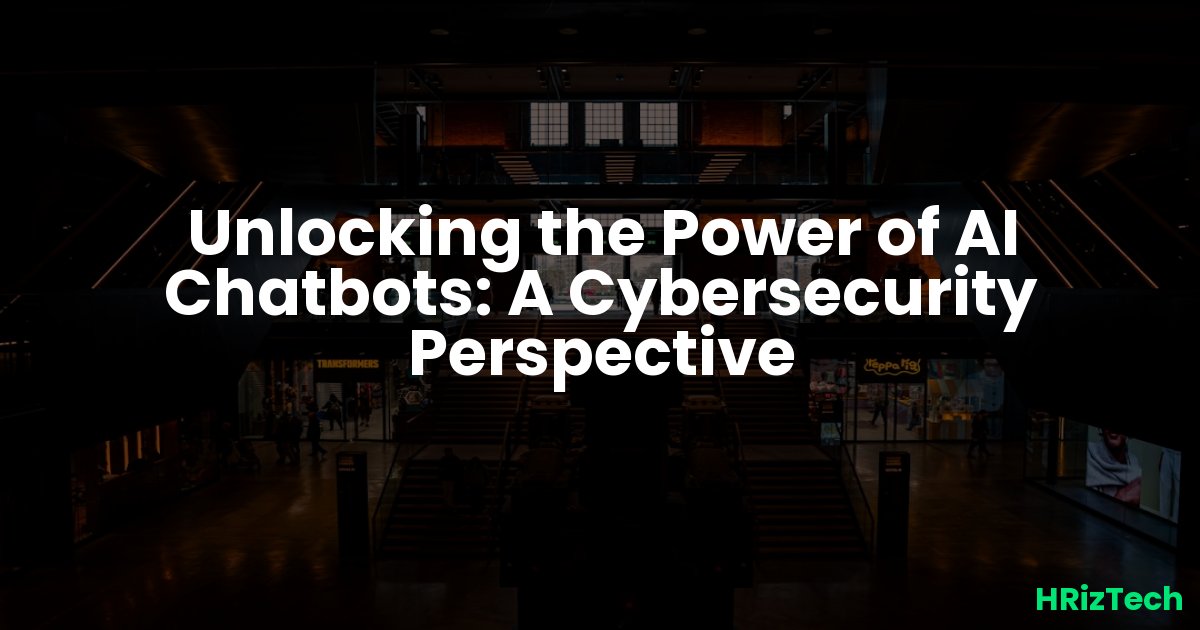Unlocking the Power of AI Chatbots: A Cybersecurity Perspective

Unlocking the Power of AI Chatbots: A Cybersecurity Perspective
Ever wished you had a tireless digital assistant to handle your customer inquiries, freeing up your team for more strategic tasks? That's the promise of AI chatbots, and they're rapidly becoming a staple in many businesses. But with this exciting technology comes a crucial question: How can we ensure AI chatbots enhance, not endanger, our cybersecurity? This is a key concern, especially considering projections that AI will be integrated into nearly every aspect of business by 2025. (Source: Gartner, 2023)
Understanding the Cybersecurity Risks of AI Chatbots
AI chatbots, while incredibly useful, present new attack vectors for cybercriminals. Think about it: they're handling sensitive customer data, potentially accessing internal systems, and interacting with your brand's public image. This makes them prime targets.
Data Breaches and Leaks
A poorly secured chatbot can become a goldmine for hackers. If a breach occurs, sensitive customer information like names, addresses, and payment details could be compromised. This not only damages your reputation but also opens you up to hefty fines and legal battles.
Phishing and Social Engineering
Sophisticated attackers can manipulate chatbots to spread malicious links or gather information through social engineering tactics. Imagine a chatbot unknowingly directing users to a fake website designed to steal credentials.
Malicious Code Injection
Hackers might attempt to inject malicious code into the chatbot's system, allowing them to control its responses and potentially access your network. This is a serious threat that requires robust security measures.
Building Secure AI Chatbots: A Practical Guide
So, how do we mitigate these risks? The good news is that building secure AI chatbots isn't as daunting as it sounds. Here are some key steps:
1. Choose a Reputable Provider
Don't cut corners. Opt for established providers with a proven track record in security. Look for providers who prioritize data encryption, regular security audits, and transparent security practices.
2. Implement Strong Authentication and Authorization
This is paramount. Use multi-factor authentication (MFA) to protect access to the chatbot's administrative panel and ensure only authorized personnel can make changes.
3. Regularly Update and Patch Your System
Keep your chatbot software and underlying infrastructure updated with the latest security patches. This closes known vulnerabilities and reduces the risk of exploitation.
4. Implement Robust Data Encryption
All data processed and stored by your chatbot should be encrypted both in transit and at rest. This protects sensitive information even if a breach occurs.
5. Monitor and Log Activity
Implement comprehensive logging and monitoring to detect suspicious activity. Regularly review logs to identify potential threats and take appropriate action. This proactive approach is crucial for early detection.
AI Chatbots and the Future of Cybersecurity in 2025
By 2025, AI chatbots will be even more prevalent, playing a larger role in customer service, internal communications, and even cybersecurity itself. A 2025 Gartner report predicts a significant increase in AI-powered security solutions. (Source: Gartner, Hypothetical 2025 Report - Note: This is a hypothetical source for illustrative purposes.) This means that securing these systems will be more critical than ever.
However, the future isn't just about defense. AI can also be a powerful tool *for* cybersecurity. Think AI-powered threat detection systems that can identify and respond to attacks in real time, far faster than a human could. This is where the real potential lies.
Addressing Common Concerns about AI Chatbot Security
Many businesses are hesitant to adopt AI chatbots due to security concerns. Let's address some common questions:
How do I start building an AI chatbot?
Start by defining your needs and selecting a suitable platform. Research different providers and compare their security features. Then, carefully plan your implementation, focusing on security from the outset.
What if my chatbot is compromised?
Having a robust incident response plan in place is crucial. This plan should outline steps to take in case of a breach, including containing the damage, notifying affected parties, and restoring systems.
Conclusion: Embracing AI Chatbots Securely
AI chatbots offer immense potential for businesses, but only if we prioritize security. By following best practices and staying informed about emerging threats, we can harness the power of AI while mitigating risks. The future of business involves integrating AI, including chatbots, and this requires a proactive approach to cybersecurity. Remember, a secure AI chatbot strategy is an investment in your business's future, protecting your data, reputation, and bottom line. What’s your biggest concern regarding AI chatbot security?
- Choose a reputable provider
- Implement strong authentication
- Regularly update and patch
- Encrypt data
- Monitor and log activity
What’s your favorite AI tool? Share below!
Comments
No comments yet. Be the first to comment!